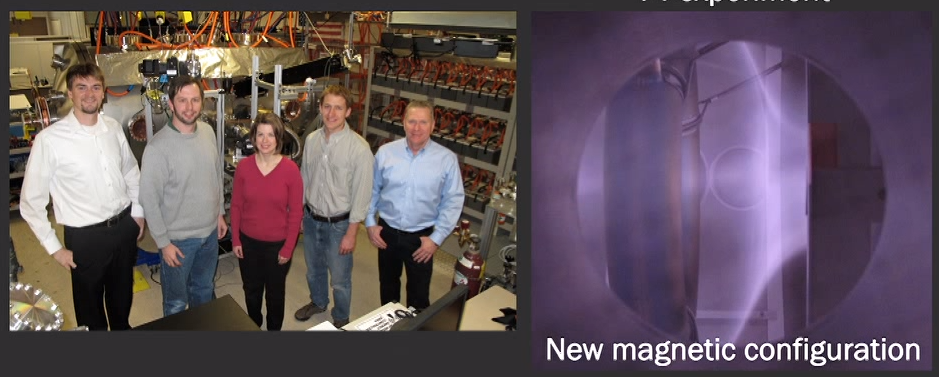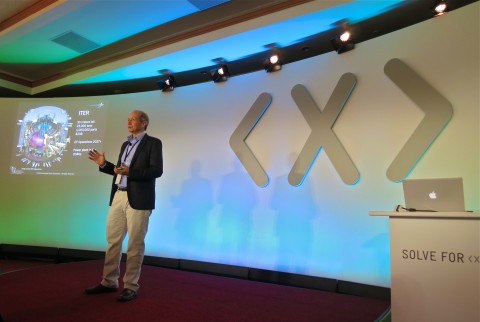At the recent Google “Solve for X” conference on February 7, Lockheed Martin's long-term R&D department (“Skunk Works”) announced they are working on a compact fusion reactor. With what seems a 4th generation prototype called "T4", the aerospace giant says to have developed a high beta configuration, which allows a compact reactor design and faster development timeline.
Lockheed Martin outlines fusion reactor plans at Google's 'Solve for X'
(photo by Steve Jurvetson, click on photo to enlarge)
Lockheed Martin and its infamous "Skunk Works" top-secret technology development group have recently shown more initiatives towards clean, reliable energy, such as the development of a 10-megawatt Ocean Thermal Energy Conversion (OTEC) pilot power plant off the coast of southern China.
Public reactions describe the announcement of their activities on nuclear fusion remarkable, because Lockheed Martin doesn't usually make public announcements about Skunkwork projects unless they have a high degree of confidence in their chances of success. The developement timeline indicates plans to have a prototype 100-megawatt nuclear fusion machine of Lockheed Martin tested in 2017, and that a fully operational machine should be grid-ready ten years from now.

Image of Lockheed Martin showing Test Device "T4"
Some of the properties reported from the presentation:
- A self-tuning feedback mechanism whereby the magnetic field increases the farther out that the plasma goes
- Novel magnetic field configuration that has very few open field lines compared to tokamak design
- Very "good arch curvature" of the field lines
- The system has a beta of about 1
- System is working with D-T fuel
It is certainly an interesting development to see a large industrial company showing interest in fusion energy, but -unfortunately - not many technical details were given away. It is therefore remains unclear how realistic their concept of a small fusion reactor will be, as no answers were given to critical issues such as tritium handling, how good the confinement of the alpha particles is assumed to be, how the coils can be mounted and shielded sufficiently inside the vacuum vessel when exposed to the plasma, and how the 14 MeV neutrons are to be shielded in a compact reactor.
More info:
- Watch the announcement of the work on a Fusion Reactor by Lockheed Martin at Google's Solve For X
- Lockheed Martin's site on Emerging Capabilities and Skunk Works (alias ADPs)
- CNN report on the news
- Wikipedia entry on the reactor
- News on American Security Project
- Popular Science news article
- Article Latest entrant in the fusion sweepstakes: Lockheed Martin, from the Weinberg Foundation

